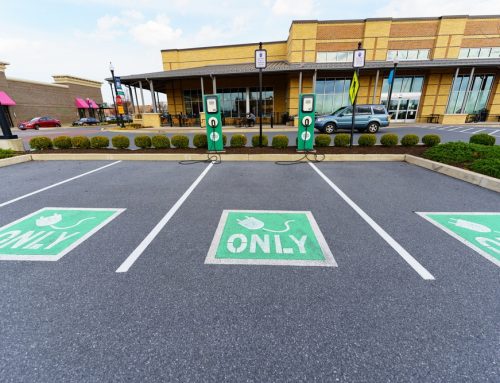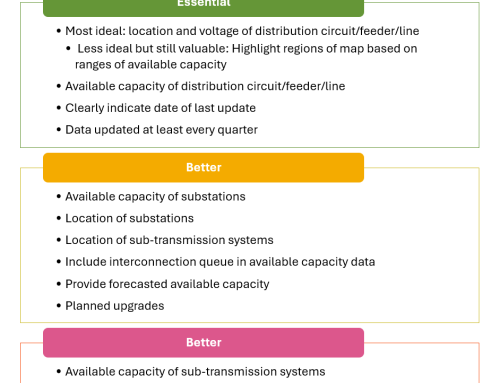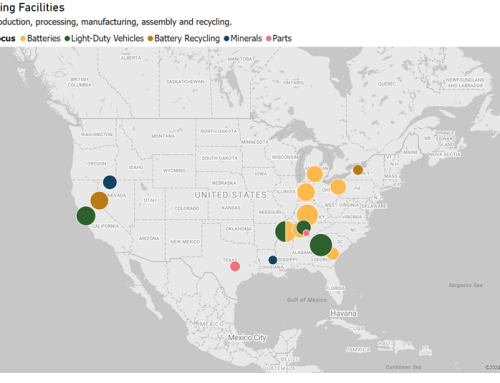
Source: Shutterstock
After a callout to the EVGridX network, we pulled together this list of programs for light duty vehicles that take equity into account. This list is not exhaustive but provides a useful snapshot of equity focused programs led by state and local governments. There is also a list of reports and resources below to complement this list.
In the interests of brevity, we have not included utility programs here but you can find a repository of utility equity initiatives on our Electric Utility Filings Dashboard (click Next until you come across the Equity page) and also in this write up 23 Percent of Utility Funding for Electric Vehicles Targeted for Underserved Communities from January 2022.
If you have insights on these programs or know others, please get in touch by replying to this email.
State Government Programs
- Oregon’s Charge Ahead rebate is $5,000 for new and used EVs (which pairs with the standard rebate of $2,500), so a total of up to $7,500 is available for low income buyers. See here.
- Connecticut’s CHEAPR program now provides additional income-qualified EV purchase rebates and used EV rebates ($1,500 to $2,000). This article has some useful background on challenges with the program. It is also adding a $500 rebate for ebikes costing less than $3000 (which a few other states have as well, including motorcycles, e.g. Oregon).
- Massachusetts’s MassEVIP program provides incentives for EV charging equipment in multi-unit housing, workplaces, and universities, and in February 2022, the MassEVIP program announced it had made awards for the installation of 94 DC fast charging stations located in environmental justice communities.
- Vermont has extra incentives for buyers/lessees in lower income brackets here.
- Virginia made an incentive program but has not yet appropriated any funding for it.
- Illinois set up an EV rebate program ($4,000) for new and used EVs that will begin July 1, 2022. The Illinois EPA run rebate program is supposed to ‘prioritize’ low-income applicants (those with less than 80% Average Median Income for the state). The state budgeted $18.5 million this year, enough for 4,600 rebates.
- Pennsylvania’s additional $1,000 rebate on top of the $750 rebate for BEVs for low-income buyers.
- California’s Clean Vehicle Assistance Program which offers grants (i.e. at point of purchase) of up to $2,000.
- California’s Clean Cars 4 All program offers up to $9,500 in grant funding towards the purchase of a new or used EV. Applicants may opt for Eligibility but considers income and whether residents live in zip codes impacted by higher levels of pollution.
Local Government Programs
- St. Paul’s Evie Carshare Program in St. Paul, Minneapolis, brought an EV option to the carshare. For low-income customers their monthly fee is cheaper and their per-mile fee is slightly cheaper. A further expansion of EV carshare option to existing multi-unit dwelling carshare operation is currently underway. Evie plans to put around 170 EVs on the road.
- The Los Angeles Clean Tech Incubator (LACI) is overseeing a number of pilots in Los Angeles, California. One of these is based on the Rancho San Pedro, a public housing site in LA.
- Good2Go Program in Boston, Massachusetts, is “an equity focused, income-tiered electric carshare in Boston’s Roxbury neighborhood”.
- The Latino Equity, Advocacy & Policy (LEAP) Institute runs Green Raiteros, a free, innovative EV ride sharing program in Huron, California for low income residents.
- Isles in Trenton, New Jersey, is leading a pilot GOTrenton! Isles is issuing the request for proposals and the pilot will include three components: Shuttle, Carshare and Rideshare.
- Trials with gig drivers are underway in Portland, Las Vegas and Phoenix. Read more here.
- The Clean Rural Shared Electric Mobility Project – Hood River, Oregon includes “five 2022 Nissan Leaf EVs at affordable housing sites, the city center, and tourist areas.”
- BlueLA, a ridesharing service in Los Angeles expanded in October 2021 to add “200 more shared EV-cars and 300 more chargers to areas such as South LA, Boyle Heights, Pico-Union, and East Hollywood.” According to reporting, there have been “1.3 million miles traveled with BlueLA. Fifty-five percent of those trips were made by low-income users using the service’s subsidized membership program”.
Other Resources
- NESCAUM drafted up a report (2020) on equitable ZEV policies and programs in the Section 177 states (ZEV states).
- Comprehensive resource about California programs, Clean Mobility Equity: A Playbook from Greenlining here (2021)
- IREC’s Paving the Way series includes a report on equity and mobility: Paving the Way: Enabling Equitable Electric Vehicle Shared Mobility Programs (February 2022)
- The recent report out of Berkeley and UCLA’s law centers: Driving Equity Policy Solutions to Accelerate Electric Vehicle Adoption in Lower-Income Communities (May 2022).
- Forth Mobility has numerous resources here. One of those focuses on equity-centering carshare programs, another on Towards Equitable Electric Mobility Community of Practice and a third on Technological Barriers to Electric Vehicle Charging at Multi-Unit Dwellings in the U.S.
- RMI’s report Electric Mobility for All (2022) made several recommendations on electric mobility and equity including on the most cost effective options and how interventions must be shaped by community need and geography.
- This paper on Inequities in California charging infrastructure by Vanessa Warheit, Andrea Marpillero-Colomina, Marc Geller, Sven Thesen (October 2021)
- A report from Ecology Action: Accelerating EV Adoption in Low- and Moderate-Income Multi-family Properties (November 2021)
These reports are all now in the Resources Library on EV Hub.
Any others we have missed? Get in touch.


